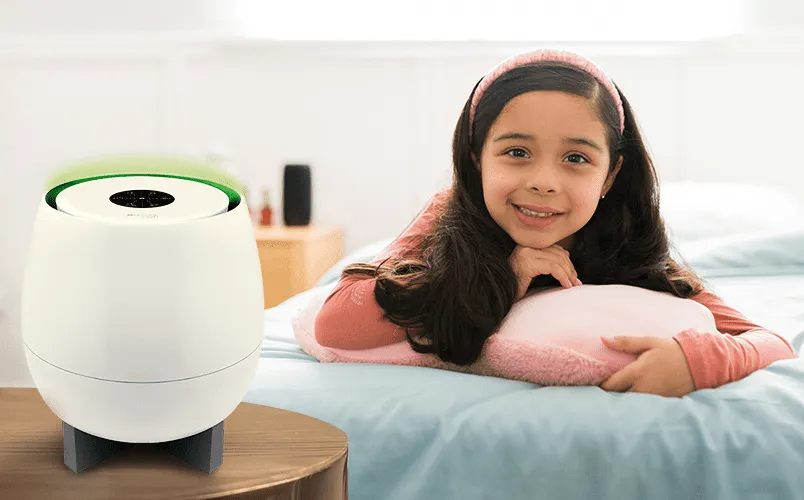Indoor air quality (IAQ) is a critical aspect of our everyday lives, considering that most people spend a significant amount of time indoors. While we might think of the air inside our homes, offices, or schools as clean and safe, the truth is that indoor air can often be more polluted than the air outside. One significant contributor to indoor air pollution is volatile organic compounds (VOCs). In this article, we will explore the relationship between indoor air quality and VOCs, understanding what VOCs are, their sources, potential health effects, and ways to improve IAQ.
Understanding VOCs
Volatile organic compounds, or VOCs, are a diverse group of carbon-based chemicals that easily evaporate at room temperature. You can find it in various indoor materials and products. VOCs are emitted as gases from certain solids or liquids. These gases can be released from a wide range of sources, including paints, cleaning agents, furniture, carpets, adhesives, and even cooking. They are responsible for the distinct odours we often notice when entering a newly furnished room or after using certain cleaning products.
Sources of VOC Indoors
The sources of VOCs indoors are manifold. Some common indoor VOC sources include:
Building Materials: Plywood, particleboard, and other composite wood products often contain adhesives and resins that release VOCs over time.
Paints and Coatings: Many paints, varnishes, and sealants contain VOCs to improve performance and drying time.
Cleaning Products: Household cleaning agents, air fresheners, and even personal care products like perfumes and hair sprays can release VOCs.
Furniture and Upholstery: New furniture and furnishings, especially those made of synthetic materials, can emit VOCs.
Carpets and Flooring: Carpets and certain types of flooring materials, especially those made of synthetic fibres, may release VOCs.
Health Effects of VOCs
Exposure to VOCs can have various short-term and long-term health effects. Short-term exposure may lead to eye, nose, and throat irritation, headaches, dizziness, and allergic reactions in some individuals. Prolonged exposure to high levels of VOCs can cause more serious health issues, such as damage to the liver, kidneys, or central nervous system. Certain VOCs, like formaldehyde, are classified as known or suspected carcinogens.
Improving Indoor Air Quality
Enhancing indoor air quality involves reducing the concentration of VOCs and other pollutants present in the air. Here are some effective steps to achieve better IAQ:
Ventilation: Proper ventilation is crucial in maintaining good IAQ. Regularly opening windows and using exhaust fans in kitchens and bathrooms can help to dilute and expel indoor pollutants.
Choose Low-VOC Products: Opt for low-VOC or VOC-free products, such as paints, adhesives, and cleaning agents, which are now widely available and better for both your health and the environment.
Indoor Plants: Incorporating indoor plants can help improve IAQ as they absorb certain VOCs and release oxygen.
Air Purifiers: Invest in high-quality air purifiers with activated carbon filters, which are effective in capturing and eliminating VOCs from the air.
Regular Cleaning: Regularly clean and dust your living space to reduce the buildup of dust and contaminants.
Proper Storage: Store chemicals and cleaning products in well-ventilated areas and ensure they are tightly closed to minimize VOC emissions.
HomePure Zayn Reduces VOC
HomePure Zayn is an advanced 5-stage air purification system that can significantly reduce VOCs and other indoor pollutants. This device is developed in Switzerland, manufactured in South Korea and is certified by the European Centre for Allergy Research Foundation (ECARF). It also employs a combination of cutting-edge technologies to ensure clean and safe air in your home. The HPP+ Electrostatic filter efficiently captures airborne particulates, allergens, viruses, bacteria, fungi and moulds. In addition, the Ultraviolet (UV) Light works to neutralize harmful microorganisms.
Additionally, the Ultra Plasma Ion Filter Technology targets and eliminates bad odours and volatile organic compounds (VOCs) present in the indoor air. With HomePure Zayn, you can breathe easy. It efffectively removes up to 99.8% of airborne pollutants and VOCs. It also promotes a healthier and more comfortable living environment for you and your family.
Conclusion

The relationship between indoor air quality (IAQ) and volatile organic compounds (VOCs) is undeniable, as VOCs play a significant role in indoor air pollution. Understanding the sources and potential health effects of VOCs is crucial for creating a safe and healthy living environment for ourselves and our loved ones. By taking proactive steps to improve IAQ, such as proper ventilation, using low-VOC products, incorporating indoor plants, and investing in effective air purifiers like HomePure Zayn, we can significantly reduce VOC concentrations and other indoor pollutants.











